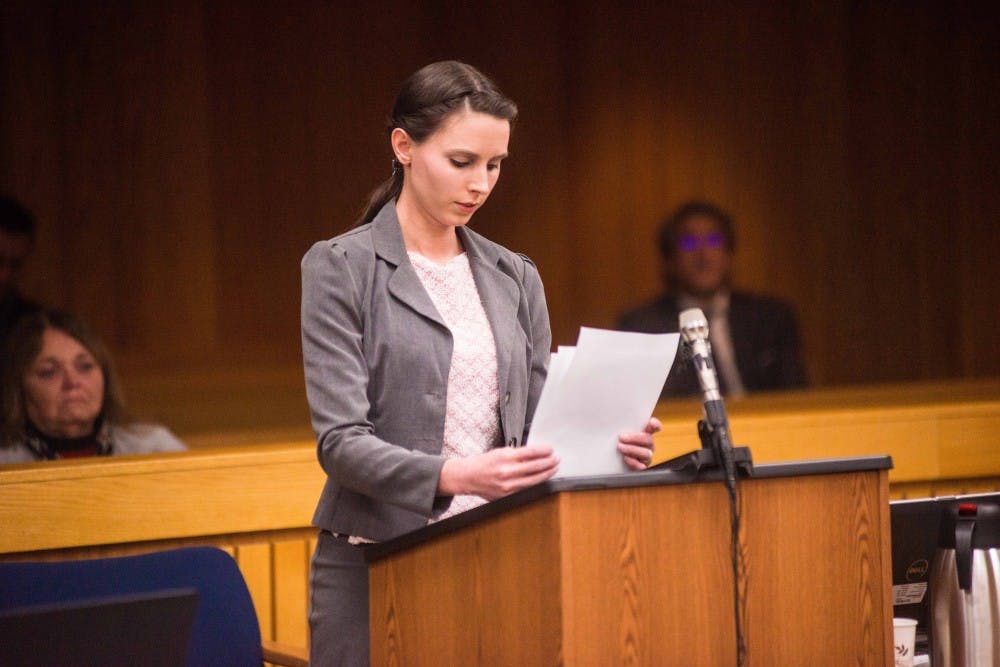Content warning: This article deals with sensitive subjects surrounding sexual assault. If needed, the National Sexual Assault Hotline can be reached at 800-656-HOPE (4673).
As we near Title IX’s 50th birthday, I’ve found myself wondering: What do the late Patsy Mink, Edith Green and Birch Bayh think of their legislative baby? Is this where they pictured their anti-discriminatory amendment to be in 2021, in terms of advancements and new-way thinking?
Truth be told, Title IX has gone through the wringer since 1974, two years after its official establishment into law. There have been rollbacks, rewrites, reviews, hate-fueled speech and other missiles from different variations of unhappy political affiliates, like former Secretary of Education Betsy Devos.
And yet, 49 years later, society is still falling short when it comes to protecting female and male athletes under its premises. Between sexual abuse scandals lighting up universities across the nation and the big leagues carrying surfacing allegations on their shoulders, have we learned nothing?
A study by the Census of Athlete Rights and Experiences, or Project CARE, indicated that 13% of student-athletes have experienced one form of sexual abuse at least once as a child in sports (21% of females, 11% of males). The most-reported forms are:
- sexual content being spread online (4.6%)
- exposing private areas (3.5%)
- being spoken to in a sexual way (3.2%)
- sending naked photos (3.2%)
And, with sport participation levels as they are today, according to the Army of Survivors – an organization funded by athlete survivors, for survivors – there are at least 5.91 million survivors in the country alone.
I googled "sexual abuse scandals in sports at universities" and to my shock, a plethora of different examples popped up. Most cases persisted over decades, like that of both Michigan and Michigan State's former athletic doctors Robert Anderson and Larry Nassar. Some cases were from actual decades ago, like that of both Ohio State and San Jose State's former athletic doctors Richard Strauss and Scott Shaw. And almost all were attempted to be swept under the rug, like that of Baylor's football program or Penn State's former defensive coordinator Jerry Sandusky.
It even happens on the national level, like that of former North Carolina Courage women's soccer head coach Paul Riley.
I could go on, but I think you get the gist. And let me just state the obvious for a second... a paycheck does not mean all is well, no matter how many spaces are on the end.
It doesn't matter how much money you offer up to a survivor, it will never compensate for the traumatizing torture they were forced to endure and it should not equate to a condemned silence. It's sad really, that institutions dash their morals and their people think this is the promised fix.
Survivors, know that you are not alone in this.
There is a large number of resources for survivors of sexual assault.
At MSU, students can contact the Center for Survivors, which offers different types of advocacy and support from one-on-one therapy, group therapy and a crisis hotline that can be reached at 517-372-6666. The university also offers a free healthcare program that is staffed 24/7 with specialized forensic nurses that can be reached at 517-353-2700.
For a more national approach, RAINN, or the Rape, Abuse & Incest National Network, offers a lengthy list of different hotlines and websites survivors can visit for a variety of different needs. They also share the laws around sexual assault and domestic violence in Michigan here.
Now, the question stands: How many times does this have to happen before society takes action? Why are we not learning from each other? When will we start forcing long-term, quantifiable consequences on authorities who fail their people?
Support student media!
Please consider donating to The State News and help fund the future of journalism.
Discussion
Share and discuss “Column: How many times does this have to happen before society takes action?” on social media.






